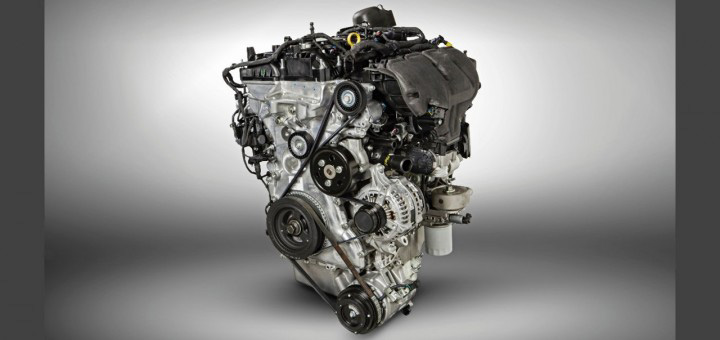Composites are touted to be a promising replacement for metals in the automotive industry which is witnessing a rapid change in the material mix to make the vehicles light weight to meet the global emission reduction targets.
Recently, Ford Motor Company has filed a patent for a new type of cylinder head design that could cut down the weight, slash manufacturing costs, and save money on raw materials. This has been made possible by replacing most of the metal content with a polymer composite.
According to the company, parts of the cylinder head would remain metal out of necessity, of course; Ford’s patent application describes an “internal metal structure” made of cast iron, which could include the upper combustion chambers, combustion chamber inserts, fire deck, engine coolant ports, and oil drain ports. This would be enshrouded by a polymer composite structure that could contain oil feeds for hydraulic valve lash adjusters and spark plug/fuel injector pockets (assuming the engine has direct injection).
That polymer might be reinforced by a fiber material, the patent application notes, including carbon fiber, aramid fiber, glass fiber, or other alternatives.
This is not the first attempt to innovate with regard to head material. The company has noted in its application that at least two patents have been granted for designs that use a hybrid of metal and ceramic. However, these heads “have a limited peak thermal and pressure carrying capabilities,” and “ceramic materials cannot be molded around a metal skeleton of the cylinder head.” A fiber-reinforced polymer could potentially solve these issues, allowing for cheaper, lighter Ford cylinder heads that can deliver all the benefits of iron, greater tensile strength and lower thermal expansion being among them.
The global automotive cylinder heads market is expected to reach US$ 10.4 billion by 2022 growing at a CAGR of 2.9% during 2017-2022, according to a research report from Stratview Research. Aluminum is projected to remain the most dominant material in the global automotive cylinder head market over the next five years, according to the market report. There would be a continuous shift from iron to aluminum cylinder heads because of several factors including lightweighting requirements. Stringent regulations imposed by governments of many countries are putting pressure on the automakers to curb the overall vehicle weight to increase fuel efficiency or reduce emissions.
The automotive industry is rapidly moving towards lightweight materials in most of its components including cylinder head to make the final component light in weight without sacrificing overall performance.
Stay tuned to the latest reports on automotive, composites and other industries by following us on Linkedin, Twitter, and Facebook.
News Source: Ford Authority
Image Source: Ford Authority
















